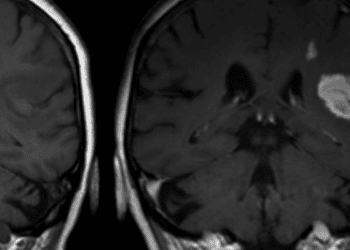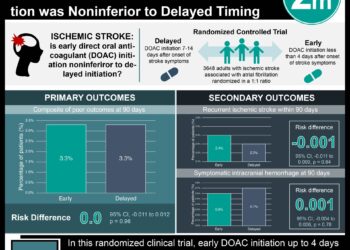Heparin bridging may increase bleeding without preventing recurrent thromboembolism
1. Patients who underwent bridging therapy with heparin during warfarin interruption for procedures had a significantly higher risk of bleed as compared to those who did not undergo bridging therapy.
2. Rates of recurrent venous thromboembolism were not significantly different across both groups.
Evidence Rating Level: 2 (Good)
Study Rundown: Warfarin is commonly used for the secondary prevention of venous thromboembolism (VTE). However, it can become difficult when deciding if the benefit of interrupting therapy for an invasive or surgical procedure outweighs the risk for recurrent VTE. Of particular interest is the benefit of decreasing procedure-related bleeds. In patients where warfarin is held, “bridge therapy” with low-molecular weight heparin (LMWH) is often instituted. This study aimed to characterize the rates of clinically relevant bleeding and recurrent VTE among patients on warfarin therapy who had did and did not have bridge therapy during invasive procedures.
Patients who received LMWH bridge therapy had 17 times more clinically relevant bleeds than those who did not receive bridge therapy. However, overall event rates were low. Despite the significantly increased bleeding risk, there was no significant difference in the recurrence of VTE between bridge and non-bridge therapy groups, even when stratified by risk of VTE recurrence. Strengths of this study include use of the Antithrombic Therapy and Prevention of Thrombosis risk stratification guidelines to determine impact of risk on VTE recurrence. However, limitations of this study include use of administrative data, which may misclassify or omit exposures or outcomes. Moreover, hazard ratios were not adjusted for potential confounders.
Click to read the study, published today in JAMA Internal Medicine
Relevant Reading: Variations in perioperative warfarin management: outcomes and practice patterns at nine hospitals
In-Depth [retrospective cohort]: This study used data from Kaiser Permanente Colorado, an integrated healthcare delivery system. Patients who were on warfarin therapy for secondary prevention of VTE and who underwent an invasive diagnostic or surgical procedure between January 2006 and March 2012 were included in the study population. Those on warfarin for atrial fibrillation or mechanical heart valves were not included. The exposure of interest was the use of LMWH bridge therapy during warfarin interruption. Primary outcomes include 30-day clinically relevant bleeding, recurrent VTE, and all-cause mortality. Data was analyzed using unadjusted Cox proportional hazard regression.
There were 1812 procedures in 1178 patients over the study period that met inclusion criteria. Warfarin therapy was most commonly interrupted for gastrointestinal endoscopic procedures (37.1%), followed by orthopedic procedures (13.6%). A total of 555 patients underwent bridge therapy and 1257 did not. Thirty-day rates of clinically relevant bleeding among bridge and non-bridge therapy groups were 2.7% (15 events) and 0.2% (2 events) (unadjusted HR 17.2; 95%CI 3.9-75.1). Bleeding rates did not differ based on dose of bridging agent. Recurrent VTE complication rates were not significantly different across bridging status groups (p = 0.56). No deaths occurred within 30 days in either bridge therapy or non-bridging groups.
Image: PD
©2015 2 Minute Medicine, Inc. All rights reserved. No works may be reproduced without expressed written consent from 2 Minute Medicine, Inc. Inquire about licensing here. No article should be construed as medical advice and is not intended as such by the authors or by 2 Minute Medicine, Inc.







